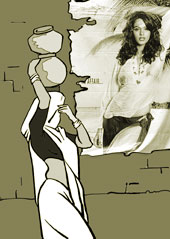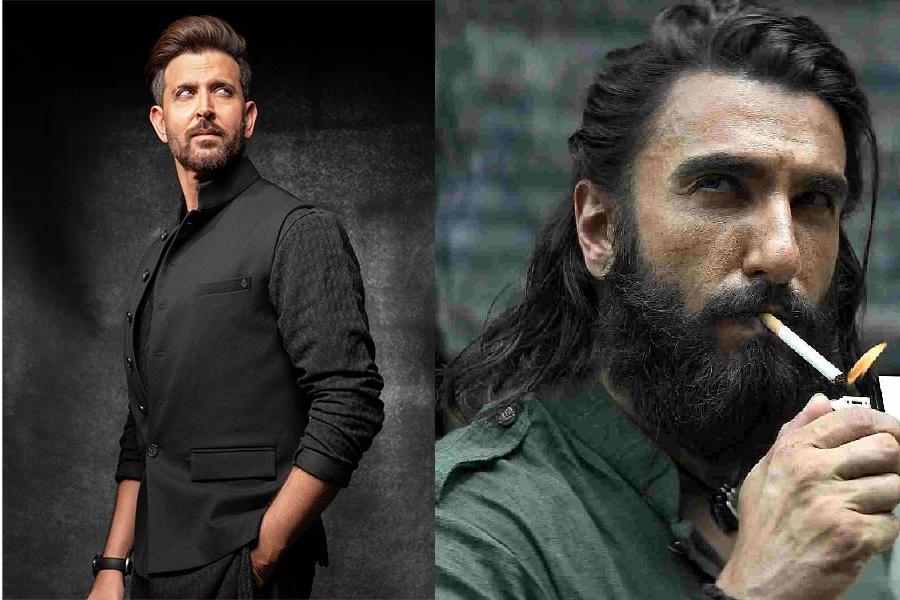 |
The kurta-clad fat man in Lakshmi Studio stares at me with his weasel-like eyes. “We get all our models from Delhi, ji. We need girls who can ‘bare’ if necessary,” he says, wielding his cheap digital camera. For Rohtak’s girls, he complains, are just not daring enough. “And especially not when we’re shooting in open areas like parks,” he rues.
Ramesh Bharadwaj aka Weasel-Eyes does all the ‘press photography’ for Rohtak. His Lakshmi Studio, like any other of its kind, is full of pictures of prospective models, interspersed with those of Mandira Bedi posing with the town’s bigwigs. Women’s cricket has not given the place a miss. As hasn’t actress Mallika Sherawat’s claims of Rohtak being her hometown.
“The studio owners uptown will know about her. I’ll ask around,” the low-life offers. As I make my way along Rohtak’s narrow roads in search of the real Haryanvi woman, I wonder how oppressed she really is. Mallika Sherawat says they’re treated no better than cattle. And she should know. Supposedly wooed by adult magazine Playboy to become their first Indian centrespread model (which the magazine denies), Mallika started here, somewhere, before she moved to Delhi.
And like models who dare to bare, Delhi — just 70 km away — has some very unusual contributions to Rohtak. The rows of houses in upmarket colonies look like their counterparts in Delhi. Flashy cars whiz by. There is even an odd jeans-clad girl at the bus stop. And in the three-wheeled tempos, men in huge turbans and women with bundles of cow fodder, their faces covered, balance themselves precariously on the roof.
Rohtak is a peculiar mixture of the urban and the rural that you see in any Indian small town coming of age. The half-dozen assistants at the office of the district joint director, public relations, government of Haryana, are better informed than Weasel-Eyes about Reema Lamba who metamorphosed somewhere along the way to Mallika Sherawat.
The Lambas, field publicity assistant Gajender Phogat tells me, lived in Dev Colony, but left for Delhi some 10 years ago. “In fact, Mallika’s mother’s maiden name was Sehrawat,” he says. “Sherawat sounds better, I think.” But the PR department has a grouse. They want to know why we have singled Mallika out. For Pamela Bordes belonged to Majhra Gaon, about 40 km from Rohtak town, where her relatives still live. “Mallika has only shaken a few old-fashioned people. Pamela shook governments,” Phogat says with quiet pride.
Manisha, who had been lent by the government-funded State Resource Centre (Search) to guide me around, points to a very modest house as we go about town. “Actress Pooja Batra’s grandmother lived here. She’d come very often, till even a few years ago. Then she hit Bollywood,” she says. Manisha has no last name. It gives her her own identity, she says. Rohtak, clearly, has some bold, smart, educated women on its rolls.
But they are a minority. The town may seem just like any other, where women go about their business nonchalantly. They ride bicycles at the Maharishi Dayanand University campus, go to medical colleges and become gynaecologists.
But while Mallika Sherawat may have gone where few women have been, the story of Haryanvi women is what makes a UNDP report. The state has one of the most uneven sex ratios in the country (1000 males to 861 females), and child marriage and female foeticide are stark realities here. In rural areas, the school dropout rate is extremely high. “Chiefly because parents will not let their girls use public transport to come to town and attend college,” Manisha explains.
On the other hand, sleaze rules. Take Weasel-Eyes, for example. The town has five cinema halls, and one of them invites you to come in and watch “Haryana ki heroine Mallika”. Her latest film, Murder, had clearly drawn crowds. “Three of the five halls have been showing soft porn movies for the last three years,” Manisha says. We’re in front of Sheela Talkies, adjacent to the Search office. The hall is currently playing Hawas Ka Pyar, four shows daily.
Have the people of Rohtak come to terms with sexuality, I wonder out aloud. Is that why Mallika is so forthcoming in her interviews? “Don’t you realise, the sexuality here is all repressed. As an adolescent, I was made to feel ashamed of my body because I was a little well-endowed. My teachers came to my mother to ask her to stop sending me to school. The women have to cover their entire faces with their dupattas. In villages, they work from dawn to dusk and the men get to drink with the money they earn,” Manisha says, her face a canvas of anguish. She calms down, and adds: “Come, let’s go meet some of our rural representatives.”
Forty-five-year-old Rajkumari Dahiya angrily shoots back when you ask her about the actress. “Chhori ne naak katwa dii.” Rajkumari is from a village near Hissar and is herself a ‘radical’ Haryanvi woman. For one, she doesn’t observe purdah. She got the courts to annul her first marriage, which took place when she was all of four, after she grew up.
Her second marriage was an inter-caste one. Rajkumari is now working with the All India Democratic Women’s Association (AIDWA), and is in town for a workshop on women’s empowerment. Obviously, Mallika’s brand of lib doesn’t cut any ice with her.
Sangita Chhokar, a member of the Panchayat in the nearby Naraina village, is more forgiving. “As a child I copied Sridevi’s dance movements. I wanted to be an actress like her. But I was married off at 15. And then, I fought the election against my father-in-law. He even sent goondas and beat me and my husband up. But I was determined and won by a huge margin,” says the proud woman.
Sangita still wraps her enitre face with her dupatta. No woman could go to the chaupal — the Panchayat’s meeting place — in her village earlier. She was the first, and now there are more. The neighbouring Bhali village has started an anti-liquor movement and a cooperative, and has gone as far as tying men to poles if they tried to drink country liquor.
The stories of misery tumble out, as do the tales of courage in the face of odds. And to give Ms Sherawat her due, in the villages of Haryana, the cattle do get to live in rooms. With the women, and the rest of the family.
Perhaps, Mallika is the real heroine of Haryana, and has shown them the way to emanicipation. Or perhaps, it’s women like Sangita. “I don’t want to be an actress anymore. All I want now is to be able to wear my dupatta around my neck, and not around my face. I’ll feel free then,” she says. Maybe, there’s a middle path.











